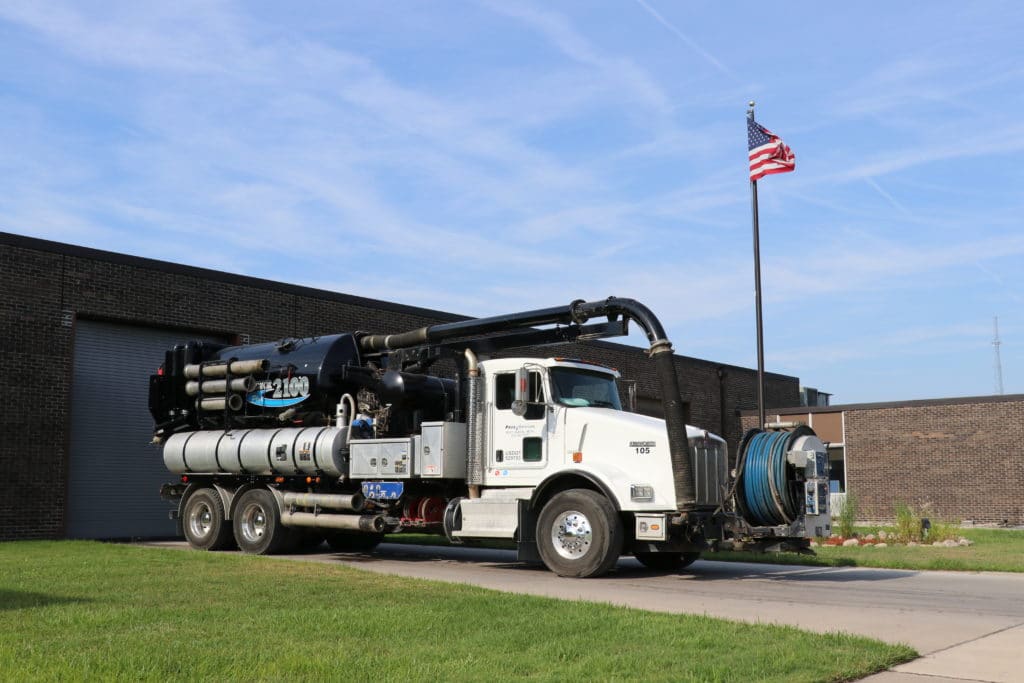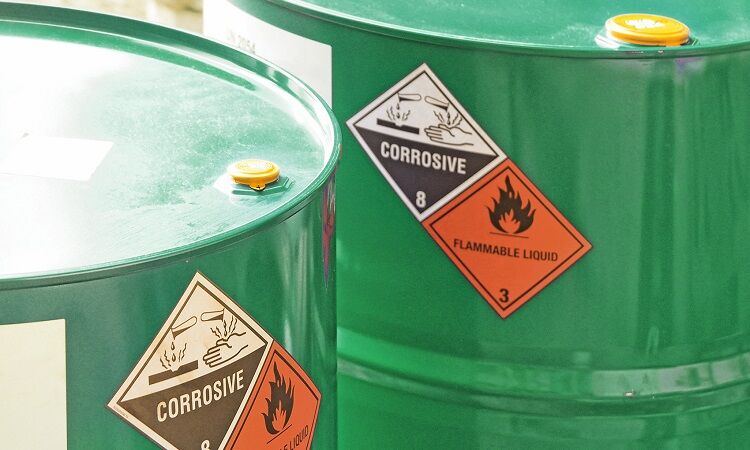Cutting-edge Industrial Wastewater Treatment Solutions: Securing the Atmosphere
Cutting-edge Industrial Wastewater Treatment Solutions: Securing the Atmosphere
Blog Article
Understanding the Comprehensive Refine of Fluid Waste Disposal: Ideal Practices and Environmental Effect Factors To Consider
The management of fluid garbage disposal is a complex problem that requires a detailed understanding of different best practices and their linked ecological influences. From the sorts of liquid waste created to the techniques utilized for collection, therapy, and final disposal, each step plays a crucial duty in guarding communities and public health. As regulative requirements advance and modern technology advances, the discussion around these procedures becomes progressively relevant. What effects do these modifications hold for future sustainability initiatives, and exactly how can stakeholders guarantee that they are appropriately attended to?
Sorts Of Liquid Waste
Comprehending the different kinds of fluid waste is essential for effective management and disposal methods. Fluid waste can be extensively classified into numerous kinds, each requiring unique handling and therapy approaches.
Industrial fluid waste commonly has dangerous products, including hefty steels, solvents, and chemicals, created throughout producing processes. These wastes demand strict governing compliance to shield human health and the atmosphere. Residential fluid waste mostly refers to wastewater created from houses, including sewer and greywater, which, although much less harmful, can still posture considerable threats if poorly managed.
Agricultural liquid waste, consisting of runoff from ranches, commonly contains fertilizers and chemicals that can cause ecological destruction if not treated appropriately. Clinical fluid waste, created from health care facilities, consists of polluted liquids such as physical fluids and chemicals, needing specialized disposal methods to avoid infection and ecological contamination.
Finally, oil and grease waste, commonly generated by restaurants and automobile markets, can trigger serious blockages in sewage system systems otherwise handled correctly. Understanding these groups helps with targeted methods for treatment, compliance with regulations, and efficient disposal methods, ultimately advertising ecological sustainability and public health safety and security.

Collection Approaches
Efficient collection approaches are vital for the proper management of liquid waste, guaranteeing that it is gathered safely and efficiently before treatment or disposal. Various methods are used depending on the sort of fluid waste generated, the quantity, and the certain qualities of the waste.
One common technique is making use of committed collection containers or sumps, which are created to capture liquid waste at the source. These systems usually integrate pumps that assist in the transfer of waste to bigger storage containers or treatment facilities. Additionally, mobile collection devices equipped with vacuum innovation are used in situations where waste is generated periodically or in hard-to-reach places.
For industrial setups, closed-loop systems can effectively decrease spills and leaks, permitting for the healing and reuse of fluid waste. It is likewise vital to educate personnel on appropriate collection protocols to alleviate risks related to dangerous substances.
Moreover, applying normal maintenance timetables for collection equipment makes sure optimal efficiency and safety. The assimilation of innovative monitoring systems can boost collection performance by offering real-time information on waste degrees and prospective hazards. On the whole, effective collection techniques are foundational to sustainable liquid waste monitoring practices.
Treatment Processes
Treatment processes play an important function in the management of liquid waste, changing potentially unsafe products into reusable sources or risk-free effluents - liquid waste disposal. These processes can be generally classified right into physical, chemical, and biological approaches, each tailored to resolve details pollutants existing in the waste stream
Physical treatment methods, such as sedimentation and filtering, job by eliminating put on hold solids and particulate issue. These methods are typically the initial step in the treatment chain, successfully decreasing the tons on subsequent processes. Chemical treatments entail the usage of reagents to counteract dangerous compounds, precipitate hefty steels, or oxidize natural contaminants, consequently improving the safety and security of the effluent.
Biological therapy procedures, including turned on sludge systems and anaerobic food digestion, capitalize on the natural capabilities of microbes to degrade organic issue. These approaches are especially effective for wastewater consisting of naturally degradable toxins. Advanced treatment technologies, such as membrane filtration and progressed oxidation procedures, are progressively employed to achieve higher levels of filtration.
Including a mix of these treatment techniques not only makes certain conformity with regulative standards yet also advertises environmental sustainability by recovering useful sources from fluid waste.
Disposal Options
Just how can companies ensure the risk-free and accountable disposal of liquid waste? Reliable disposal choices are essential for protecting public health and wellness and the setting. The main techniques include land incineration, disposal, and therapy adhered to by discharge into municipal wastewater systems.
Land disposal includes the cautious control of liquid waste in marked land fills, making sure that it does not leach into surrounding dirt or water. Incineration, on the other hand, topics liquid waste to high temperatures, transforming it into ash and gases, which call for proper filtering to decrease emissions. This technique is suitable for hazardous wastes that can not be treated via standard means.
In situations where fluid waste can be treated, companies may go with biological or chemical therapy procedures to reduce the effects of harmful elements prior to discharging the dealt with effluent into community systems. This course generally straightens with governing requirements, guaranteeing that the effluent satisfies safety standards.
Ultimately, organizations must conduct complete assessments of each disposal choice to establish its feasibility, thinking about elements such as waste composition, governing conformity, and possible risks to health and wellness and the environment. By picking proper disposal approaches, companies can add to a responsible waste monitoring technique.
Ecological Effect
The ecological impact of liquid waste disposal is an essential consideration for companies seeking to reduce their eco-friendly footprint. Additionally, the discharge of neglected or improperly dealt with waste right into surface waters can result in eutrophication, leading to oxygen exhaustion and the succeeding more tips here death of fish and various other organisms.

To reduce these influences, companies have to take on finest practices such as executing extensive waste treatment procedures, promoting recycling and reuse, and adhering to regulatory requirements. By taking an aggressive method to fluid waste management, entities can considerably minimize their environmental footprint while supporting sustainable advancement goals. Eventually, an extensive understanding of the ecological influences connected with fluid waste disposal is essential for notified decision-making and liable stewardship of natural resources.
Final Thought
Effective administration of fluid waste is essential for securing ecological stability and public wellness. By adopting best techniques in disposal, collection, and treatment, together with adherence to regulatory standards, the capacity for dangerous contamination of environments can be substantially reduced. Continuous innovations in innovation and procedures add to sustainable waste management initiatives. Eventually, a comprehensive understanding of liquid garbage disposal not only minimizes ecological influences yet additionally cultivates a commitment to liable source monitoring and environmental stewardship.
The management of fluid waste disposal is a complex problem that calls for an extensive understanding of various finest methods and their connected environmental influences. From the types of fluid waste created to the methods over here used for collection, treatment, and last disposal, each step plays an important duty in securing communities and public wellness.The ecological effect of liquid waste disposal is an important consideration for organizations seeking to decrease their ecological impact. Eventually, a detailed understanding of the environmental effects linked with liquid waste disposal is necessary for notified decision-making and responsible stewardship of natural sources.
Ultimately, a thorough understanding of liquid waste disposal not only reduces ecological influences however additionally cultivates a dedication to responsible source administration and ecological stewardship.
Report this page